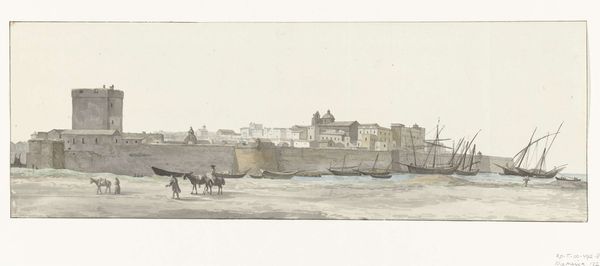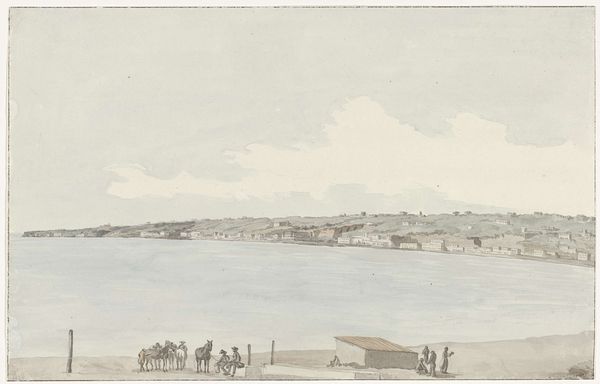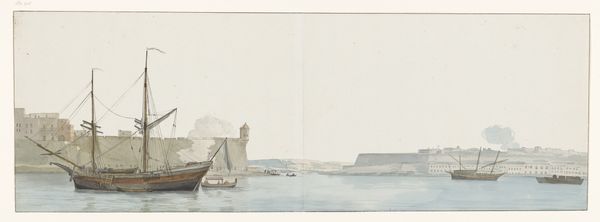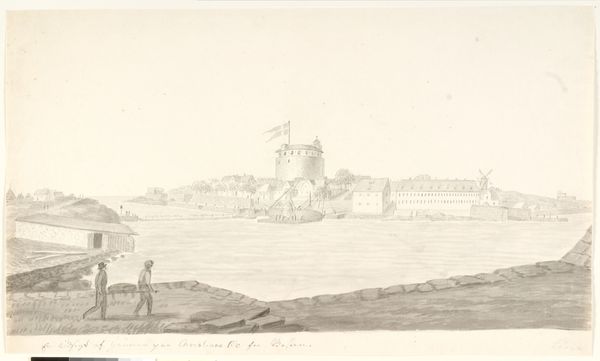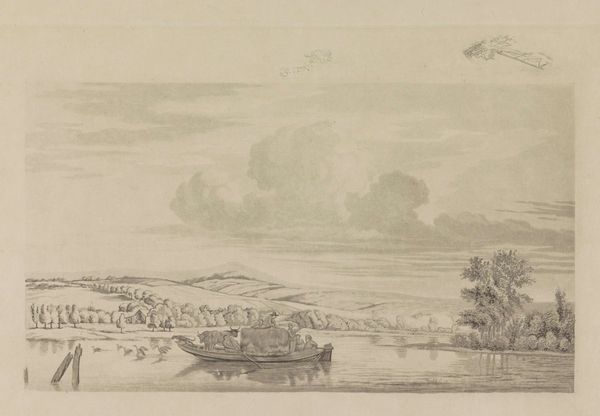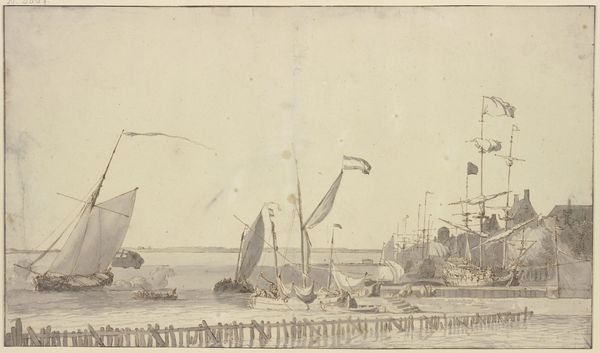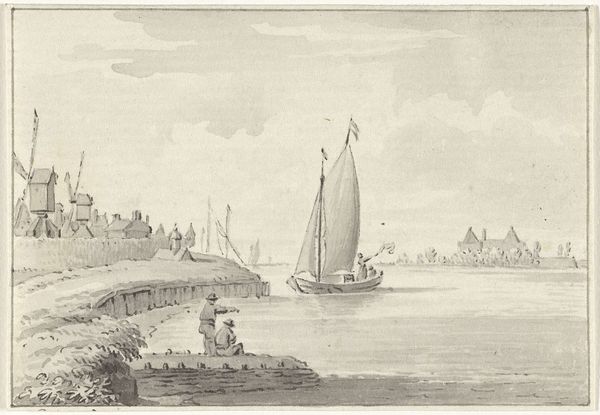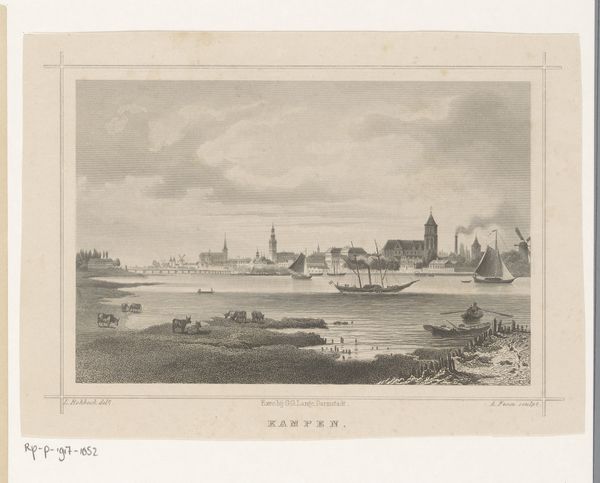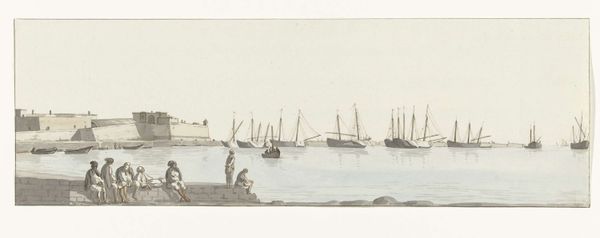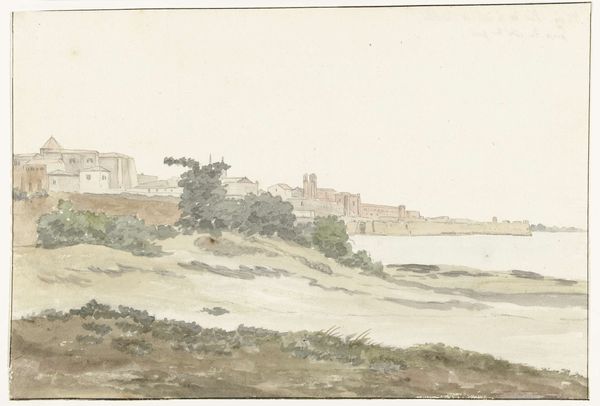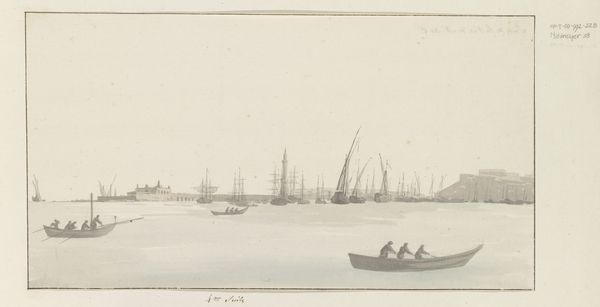
plein-air, watercolor
#
neoclacissism
#
plein-air
#
landscape
#
watercolor
#
cityscape
#
watercolor
Dimensions: height 175 mm, width 740 mm
Copyright: Rijks Museum: Open Domain
Editor: This is "View of the City of Taranto and Surroundings from the Aqueduct" by Louis Ducros, dating back to 1778. It's a watercolour piece and… wow, it's like stepping into a dream. The soft, muted colours create a hazy atmosphere. What draws your eye in this scene? Curator: Well, for me, it's the subtle interplay between the grand panoramic view and the intimate, almost snapshot-like, details of everyday life unfolding in the foreground. Ducros captures the vastness of the city, yet doesn't forget the goats, the figures along the shore, the texture of the earth… it's a wonderful balance, don't you think? Editor: I see what you mean! It's almost like he's saying, "Look at the big picture, but don't miss the small stuff". Was plein-air painting a big thing back then? Curator: Absolutely! Ducros was part of a wave of artists who embraced the 'en plein air' approach, moving out of the studio and directly into the landscape to capture the fleeting moments of light and atmosphere. Think of it as the 18th-century version of Instagramming your lunch – only, instead of avocado toast, you have a stunning Italian cityscape! It allowed for an immediacy, a truthfulness that had been missing. Do you feel that here? Editor: Totally! The light feels so real, like you could reach out and touch it. I also notice how the aqueduct sort of frames the scene… almost like he's inviting us to look closer at this space from his perspective. What else can we see? Curator: Ducros uses the aqueduct not just as a compositional tool, but perhaps also as a reminder of human ingenuity, of our continuous shaping of the world around us. But it's not forceful, is it? It sits softly, blending the hand of humans in the picture, the buildings on the coast, and his art. And think too about Taranto: a city with such a rich classical history now captured in the dawn of neoclassical painting… How poetic is that? Editor: It makes me think about how art can be a time machine, transporting us back to another era. Thanks, I've definitely seen a new perspective today! Curator: As have I. There is nothing better than sharing thoughts and different perspectives, especially regarding the timeless elegance that speaks across years of history.
Comments
No comments
Be the first to comment and join the conversation on the ultimate creative platform.
